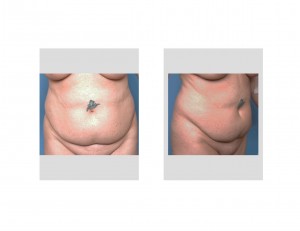Background: The tummy tuck procedure is one of the common and successful body contouring surgery. Whether it is a woman who is battling the loose and stretched skin from pregnancies or either sex whose has developed a lower abdominal overhang after weight loss or bariatric surgery, the tummy tuck provides a permanent solution in just a few hours.
In a traditional full tummy tuck, skin and fat excision is the first part of the procedure. The amount of skin and fat removed extends vertically from above the belly button down to the pubis. The wide elliptical excision of skin and fat extends horizontally from one hip to the other hip. With its removal leaves a very large lower abdominal defect that easily accounts for 1/3 or more of the total abdominal surface area.
The coverage of this lower abdominal defect is the second part of a tummy tuck and is obviously necessary for its completion. This is done by using the remaining abdominal skin from above and bringing it down over the defect to meet the lower pubic skin. The ability of the upper abdominal skin flap to bridge this gap depends on two factors; actual tissue movement and skin elasticity and stretch. Skin flap movement comes from undermining and releasing attachments, often as far up as the bottom of the rib cage. Stretching of the skin depends on how much elasticity it has. While both factors contribute to allow this tissue coverage, which one is more significant?



Case Highlights:
1) The fundamental principle of a tummy tuck is that the remaining upper abdominal skin flap must be freed and stretched downward to replace what was removed.
2) In this patient with a pre-existing tattoo just above the belly button, the location of the tattoo after surgery confirms how much the upper abdominal skin flap actually moves
3) The distortion of the tattoo shows that the downward movement of the skin flap depends on a combination of actual tissue movement and skin stretch.
Dr. Barry Eppley
Indianapolis, Indiana


